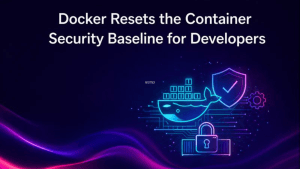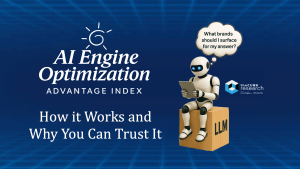Contributing Analysts
David Floyer
Stu Miniman
Premise
In earlier research entitled Oracle Trusted Partitions accelerates the move to cloud operating models , Wikibon described Oracle Private Cloud Appliance (PCA), and discussed how Oracle Trusted Partitions were an important part of the Oracle strategy to reduce overall system costs. The research concludes, “…Solving Oracle licensing challenges can add a major (often overwhelming) benefit to the business case…“
This research extends the previous research, and investigates the business case for PCA in a mixed workload environment, with only 20% of the workload using software such as Oracle Database, Oracle E-Business Suite, JD Edwards, Microsoft SQL Server, and SAS. All these software packages share the characteristics that they are expensive to purchase, but all are high performant software packages delivering high value to users and the business.
The premise tested in this research is that high value applications and software should be run on more capable converged performance-optimized infrastructure, even when they constitute a small proportion of the total workload. In contrast, cost-optimized infrastructure will save on short-term hardware costs, but will incur much higher overall costs long-term.
High Value Compute
Wikibon uses the term High Value Compute for workloads that require high-performance and/or use expensive software. Figure 1 shows Wikibon’s System Value vs. System Cost topology, and places different workloads within that topology. The detailed placement of workloads on this topology by an enterprise will depend on the business priorities of the organization. The workloads with low software costs and low performance requirements (e.g., simple web-based consumer inquiry, bottom left on Figure 1), cost-optimized infrastructure will be sufficient.
However, as the proportion of the workload that is complex and uses high-cost software increases, there is a requirement for infrastructure with high performance. The application value to the organization has to be high to justify the software and infrastructure cost.
The reality for most IT organizations is it is difficult to predict which workloads in a mixed environment will need additional performance and which will not. Keeping track of the workloads and moving the workloads around to minimize infrastructure costs takes resources away from value creation.
So the question becomes – should IT buy cost-optimized infrastructure and spend time and effort on the high-value compute (say 20%) to get them to run better, or should IT upgrade the complete IT infrastructure to optimize for the 20% needing high performance, even though in theory the 80% could need less resources?
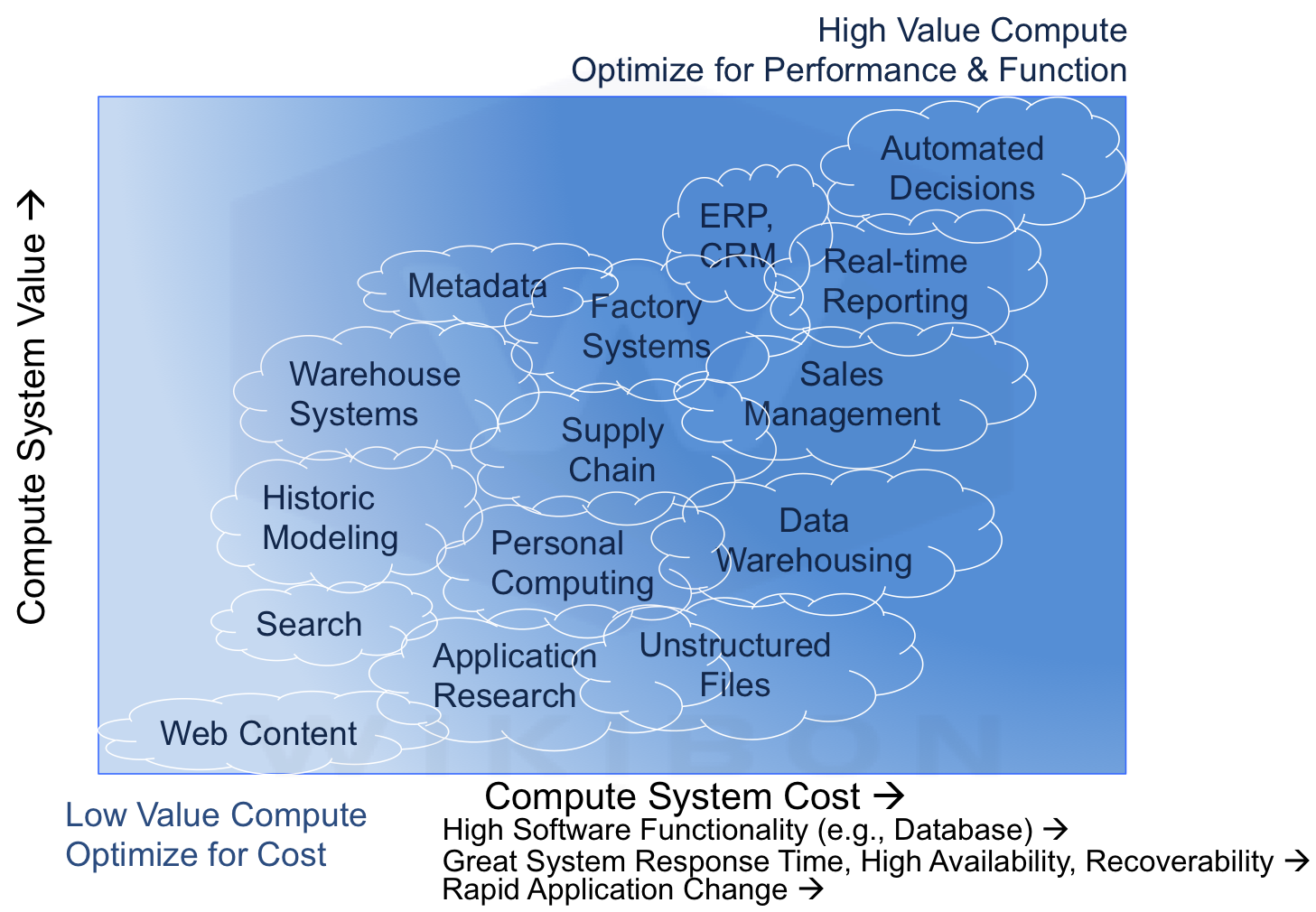
Source: Wikibon © 2016
A summary of the three-year IT cost analysis is shown in Figure 2 below. It compares the same mix of 20% high-value workload with 80% lower-value workload running on either cost-optimized hardware or converged performance-optimized hardware. The analysis shows that a traditional cost-optimized infrastructure is about 50% more expensive than a performance-optimized converged infrastructure approach. This does not include the non-quantified business benefits of faster time-to-value and faster response times, which are superior in a performance-optimized environment. The sections below show the detail assumptions of the business case and the detailed methodology.
The conclusion of this study is that using performance-optimized converged infrastructure is a “no-brainer” in most practical environments.
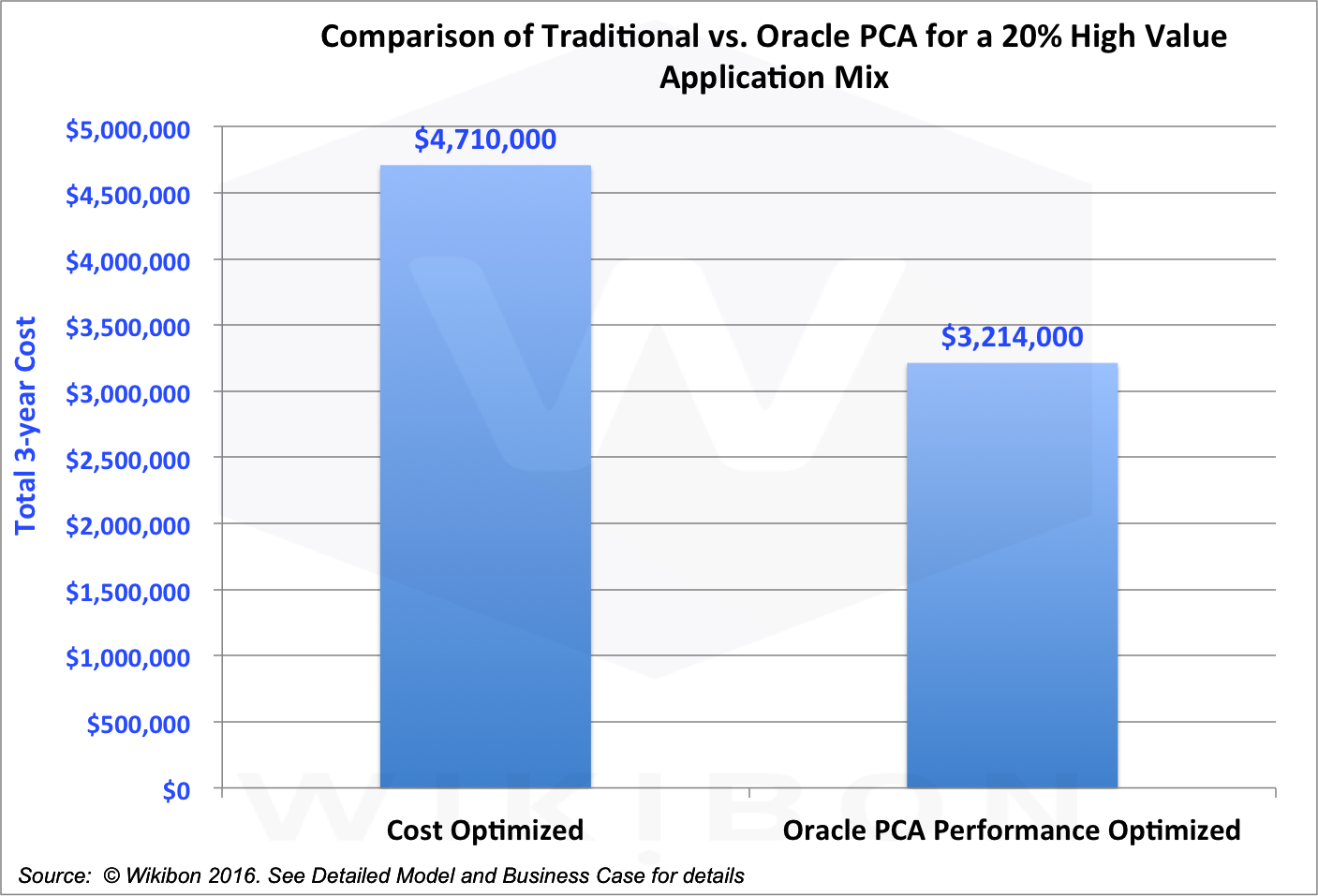
Source: Wikibon © 2016
Assumptions in Business Case Analysis
In general performance-optimized systems have fewer higher-performance cores/processor, have very large high-performance DRAM memory, high high-performance interconnect (the Oracle PCA uses point-to-point InfiniBand connectivity), and higher performance storage with a high percentage of NAND flash storage.
Traditional Cost-optimized systems have fewer processors with high-core counts, have less memory, and have standard lower performance Ethernet connectivity, and a high proportion of HDD disk storage.
The key assumptions used in the study are:
- The high value workloads include Oracle Enterprise Licenses, Microsoft SQL Server licenses, and SAS licenses, all of which have license fees based on the number of cores used.
- The average cost per core of the three licenses is $25,650 per core.
- The 3-year cost/core for cost optimized infrastructure (including networking, storage) is $1,200/core
- The 3-year cost/core for performance optimized infrastructure (including networking, storage and maintenance) is $3,750/core
- Hardware maintenance is 10%/year for cost optimized, and 12% of performance optimized.
- 44% fewer performance-optimized cores are required than cost-optimized cores
- 20% of the cores are used for high-value workloads (Oracle Enterprise DB (7%), Microsoft SQL Server (10%), and SAS (4%))
- The discounted average cost for databases is $25,650/DB core
- System Administrators costs $140/hour fully loaded
- DBAs cost $200/hour fully loaded
- Cost-optimized infrastructure needs 80 minutes/DB core/month for database administration, and 8 minutes/core/month for systems administration.
- Performance-optimized infrastructure needs 50 minutes/DB core/month for database administration, and 6 minutes/core/month for systems administration.
- The cost-optimized system size is 360 cores, and the Oracle PCA performance optimized size is 200 cores.
- Red Hat Virtualized Linux Subscription is $2,499/year/cluster
- Oracle trusted partitions were used to reduce the number of Oracle licenses required to 6 on the performance-optimized, compared with 12 on the cost-optimized infrastructure (2 cores/Oracle license)
- A 50% discount was assumed on the purchase price of all the high-value software.
These assumptions are reflected in the assumptions and detailed 3-year cost model below in Table 1.
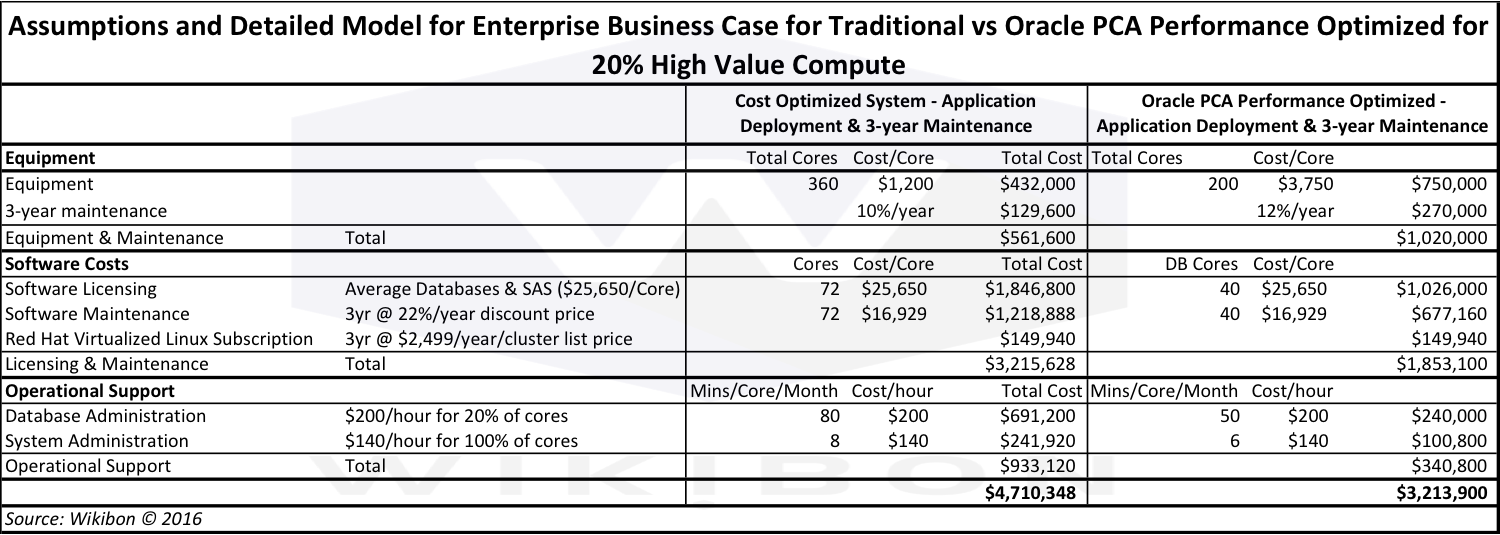
Source: Wikibon © 2016
Business Case Analysis
Table 2 shows the results of the assumptions in Table 1 applied to a 3-year business case format. The overall 3-year cost of the cost-optimized is $4.7 million, compared with $3.2 million with the performance-optimized infrastructure. The overall net present value of the savings is about $1.4 million over three years.
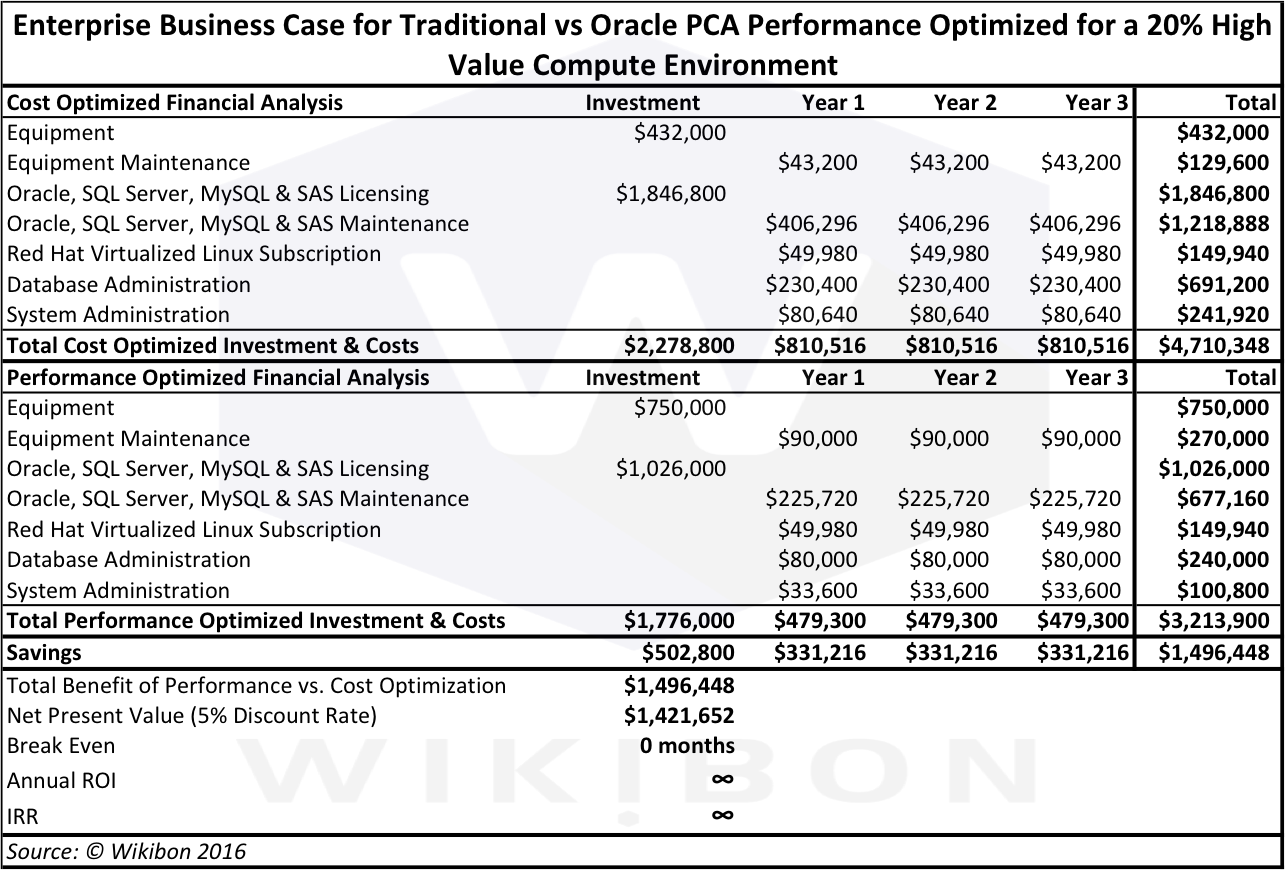
Source: Wikibon © 2016. See Table 1 above for assumptions.
The break-even of the project is 0 months, mainly because fewer software licenses need to be purchased. This means the normal business metrics of ROI and IRR are no longer applicable.
The business case assumes than the software licenses were purchased at the beginning of the project. In some cases there will be savings on licenses already acquired. These savings can be applied to the reuse of the licenses by other projects. The cash flow timing will be different, but the overall business case very similar.
Figure 3 below shows that the major benefits come from reduced initial software licenses and software maintenance. If there were no software costs at all, the benefits would be reduced to lower operational staff costs. This would be about an overall 16% 3-years saving by using performance-optimized equipment.
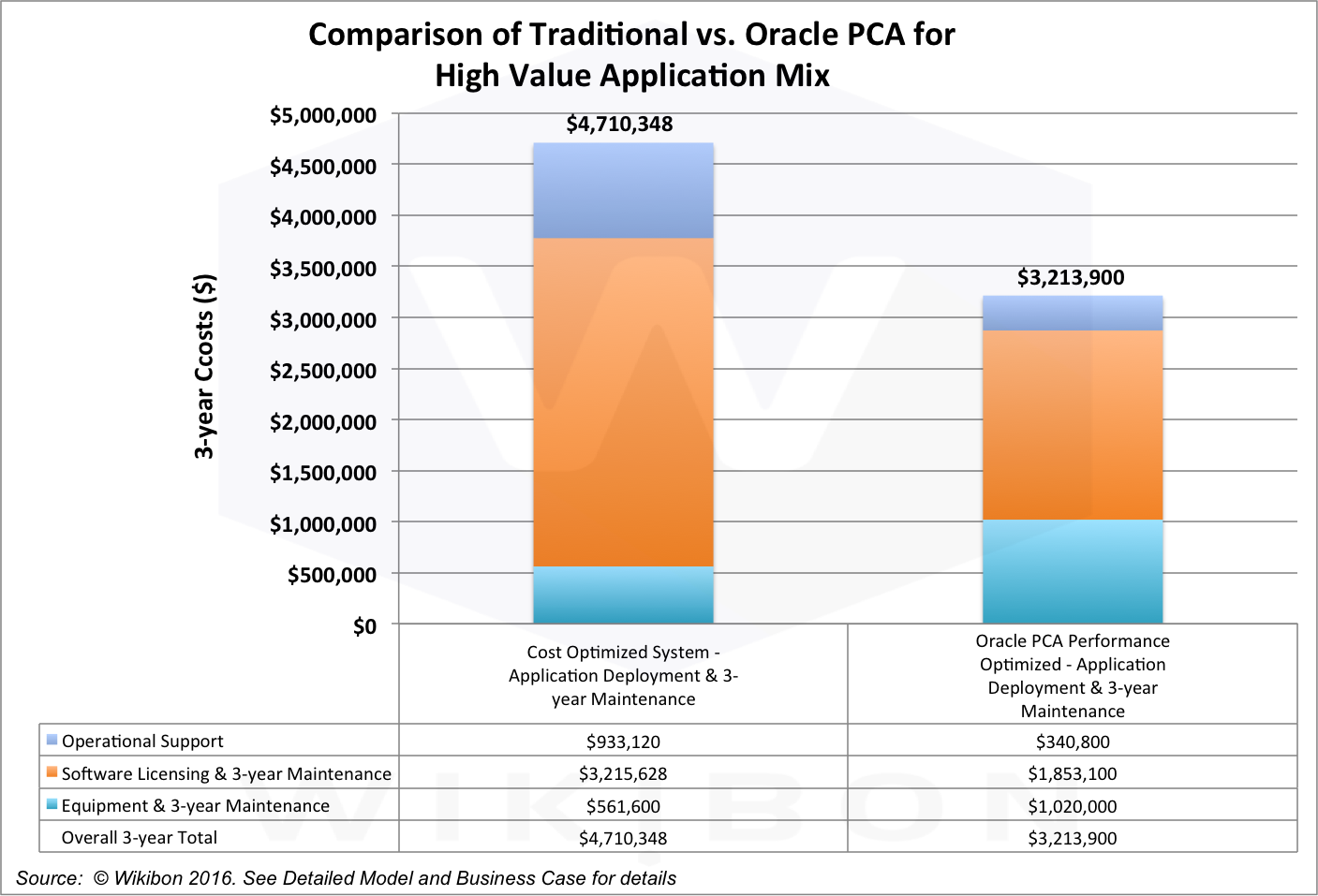
Source: Wikibon © 2016. See Table 1 & Table 2 for detailed assumptions and calculations.
The conclusion of this business case analysis is that if there is any question that the infrastructure may be used for high-value software/applications, converged high-performance infrastructure will be the infrastructure strategy of choice.
Additional Non-quantified Benefits of Performance-Optimized Infrastructure
Additional un-quantified reasons for using performance-optimized converged infrastructure such as the Oracle PCA include:
- Much faster and lower cost for the design, install and test of the initial infrastructure (from months to hours)
- Lower elapsed time for job completion or faster interactive response times
- Maintenance using the quarterly pre-integrated and pre-tested updates to the whole infrastructure leads to fewer planned and unplanned outages
- Better utilization of all compute resources to meet SLAs.
- Much better handling of peaks and application hotspots.
For more specialized dedicated high-performance workloads, there are other solutions. For example, Oracle has Exadata that focuses on Oracle database intensive workloads, and Exalogic for installations looking to tune performance specifically for middleware.
Conclusions
This research concludes that performance-optimized converged infrastructure in general (and the PCA in particular) has higher initial hardware costs, but overall is a much lower cost way of delivering high value applications that traditional low-cost infrastructure approaches.
Wikibon has previously published research that demonstrates excellent business cases for converged performance-optimized infrastructure dedicated to Tier-1 high cost database environments such as Oracle Databases or Microsoft SQL server. In this research, Wikibon shows that there are very significant savings in mixed environment workloads, where only 20% of the workload requires high value compute. This research and other research has established beyond doubt that a performance-optimized converged infrastructure strategy (or performance optimized cloud machine strategy), is a superior way of providing infrastructure in a datacenter. In addition, this strategy delivers significantly better outcomes to the business.
Action Item
Wikibon strongly recommends IT executives adopt a default of performance-optimized converged infrastructurec for all mixed workloads when even a small proportion includes high-cost software and/or high-value applications.

